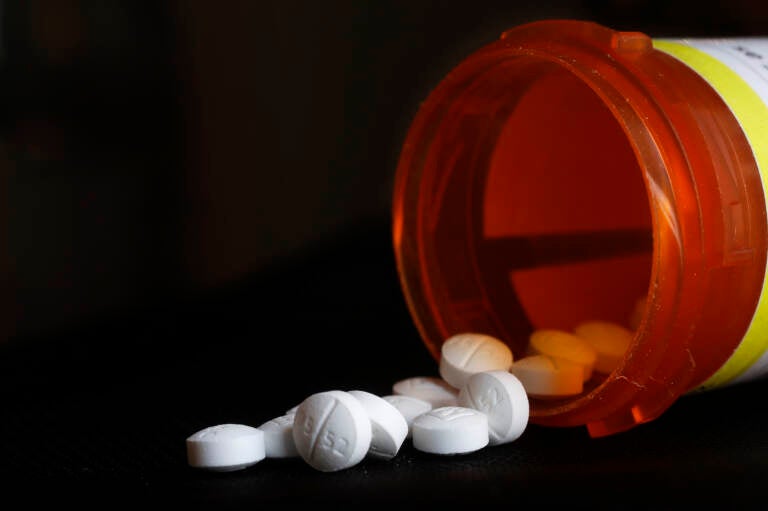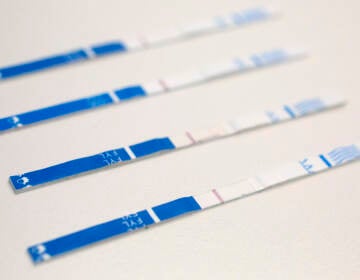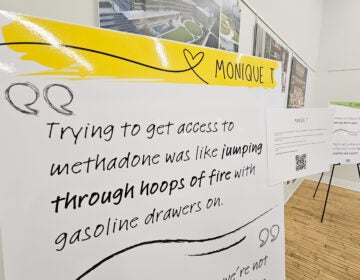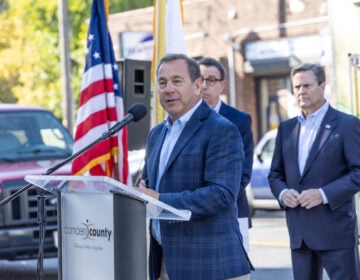Polysubstance use and addiction on the rise in Pa. and Del., new report finds
More than 30 percent of patients seeking treatment at Gaudenzia non-profit addiction this past year had both a primary and secondary substance use disorder diagnosis.

File photo: This photo shows an arrangement of Oxycodone pills. (AP Photo/Mark Lennihan, File)
A new report by one of the region’s largest non-profit addiction treatment organizations shows an uptick in polysubstance use, or the use of multiple drugs at the same time. This, experts say, can drive more overdose deaths.
Dr. Dale Klatzker, CEO of Gaudenzia, said more than 30 percent of patients seeking treatment at the non-profit’s programs this past year had both a primary and secondary substance use disorder diagnosis.
“It’s not just one drug, it is multiple drugs,” he said Friday. “It suggests that our industry needs to develop new and specific withdrawal management and clinical treatments for these substances.”
Gaudenzia operates more than 50 treatment facilities in Pennsylvania, Delaware, Maryland, and Washington, D.C.
There were an estimated 107,622 drug overdose deaths in 2021, according to the U.S. Centers for Disease Control and Prevention. It was the highest annual overdose death toll ever recorded in the country.
Experts say the COVID-19 pandemic only exacerbated the addiction crisis.
Jennifer Smith, Secretary of the Pennsylvania Department of Drug and Alcohol Programs, said a majority of deaths today involve fentanyl, a synthetic opioid that’s up to 100 times more potent than morphine.
While fentanyl traditionally showed up alongside heroin and other opioids, Smith said it is increasingly appearing in other substances like stimulants, crack, and cocaine. With a rise in polysubstance use, she said this is leading to more overdose deaths.
“Because these communities aren’t prepared for an opioid overdose,” Smith said, “they’re not maybe equipped with naloxone, they might not be using safely and ensuring that they are using near other individuals who are equipped with naloxone.”
Smith added that this trend is also driving racial disparities in overdose deaths. In the past year, she said there’s been a “drastic increase” in the overdose death rate among Black Pennsylvanians.
“That’s something that we’re really keeping a close eye on in Pennsylvania, trying to figure out how we can get some funding opportunities to organizations that specifically target and engage individuals from those communities,” she said.
Delaware Lt. Gov. Bethany Hall-Long said this trend is also playing out among youth.
“Our major hospital system last week, we had two young adults, 14 and 17 [years old], who were taking what they thought were street level Adderall,” Hall-Long said. “It was laced with fentanyl.”
Hall-Long said Delaware was one of few states that saw a decrease in the number of overdose deaths in 2020. However, deaths again spiked the following year and the lieutenant governor attributed that to more deadly levels and types of fentanyl.
If you or someone you know is struggling with substance use, SAMHSA’s National Helpline is a free, confidential, 24-hour hotline that offers referrals to local treatment facilities, support groups, and community-based organizations. Call 1-800-662-HELP for more information.
WHYY is your source for fact-based, in-depth journalism and information. As a nonprofit organization, we rely on financial support from readers like you. Please give today.






